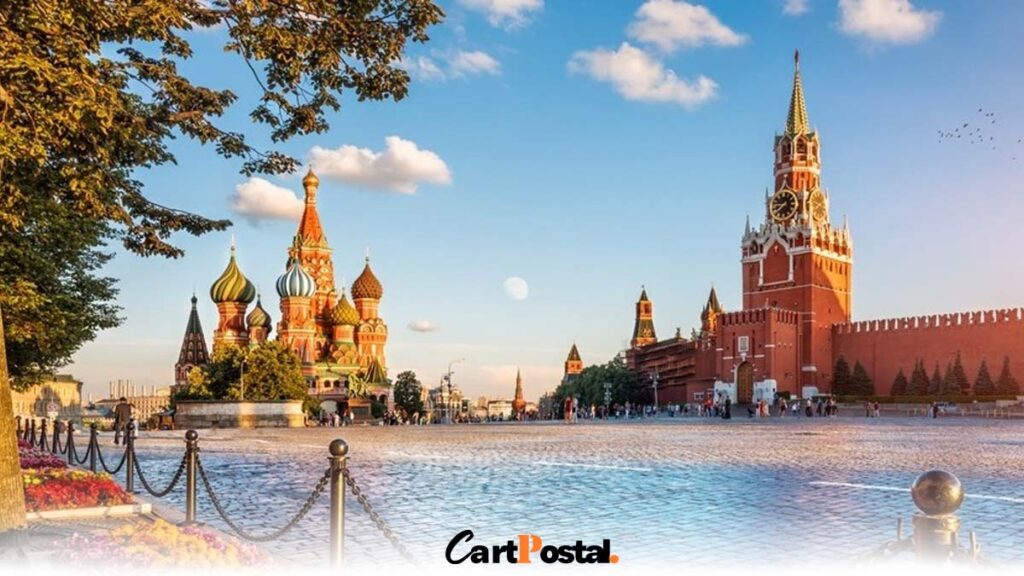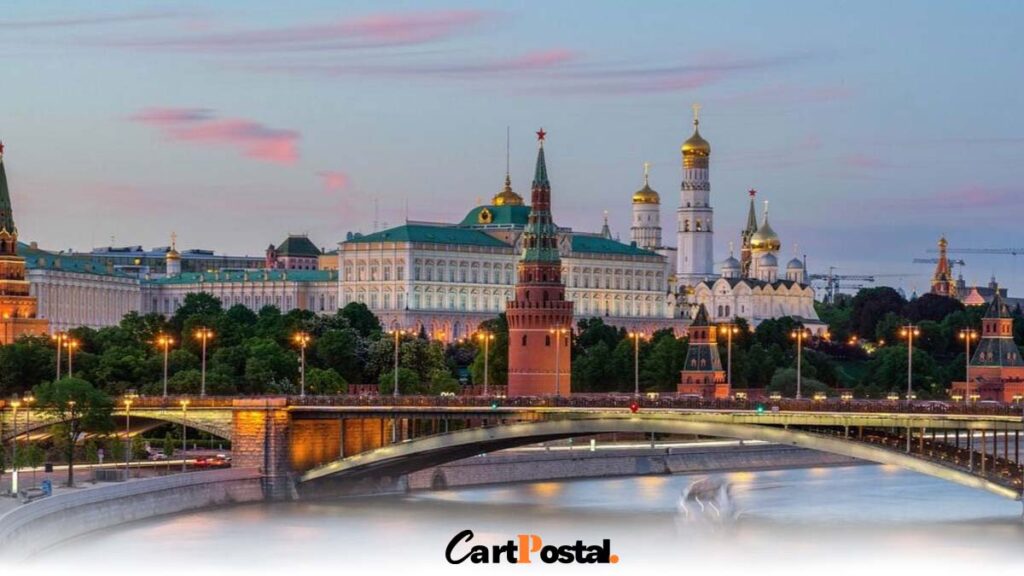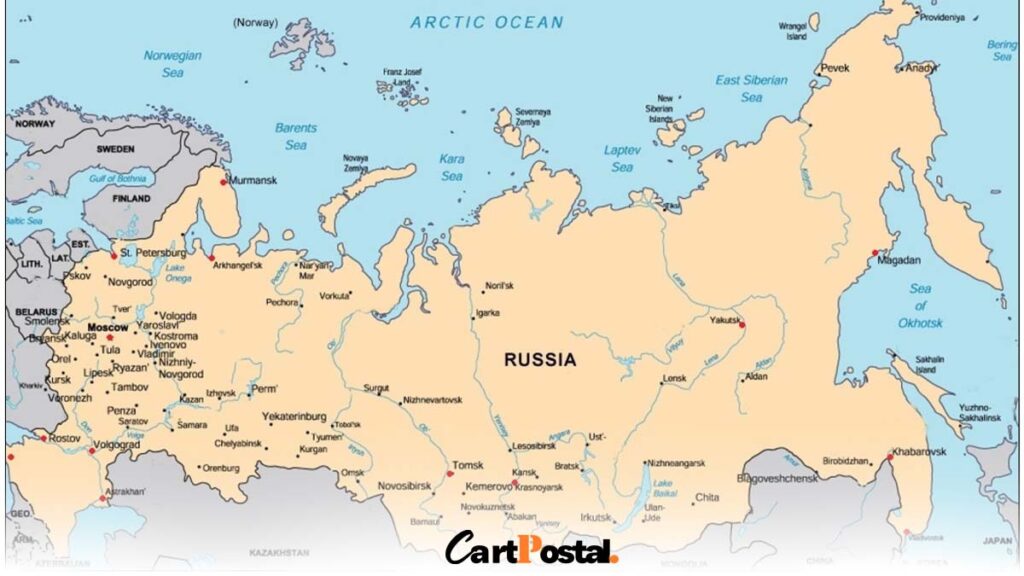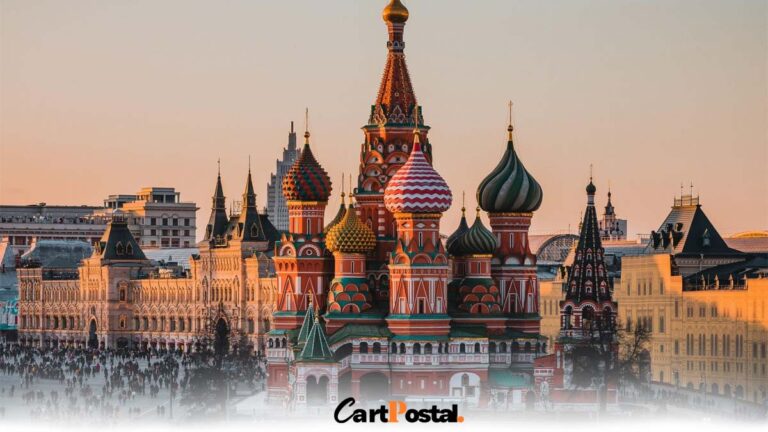Introduction
Russia, the world’s largest country by land area, spans over 17 million square kilometers and includes diverse regions, cities, and time zones. Navigating the Russian postal system can be complex, especially when dealing with mail delivery, logistics, or traveling. Understanding Russian postal codes—also known as ZIP codes—is essential for smooth communication and parcel delivery across the country.
In this article, we’ll take a deep dive into how Russia’s postal code system works, examples from major cities, how to search for ZIP codes, and tips for businesses and travelers. Whether you’re shipping a package, filling out a form, or planning a trip, this guide will help you understand the structure and usage of postal codes in Russia.
What Are Russian Postal Codes?
Russia uses a six-digit postal code system, commonly referred to as an index (Индекс). These codes help sort and route mail to specific locations efficiently.
- Format: The postal code consists of 6 digits (e.g., 101000).
- The first three digits represent the federal subject (e.g., region or republic).
- The last three digits point to a specific city district, town, or street.
Example:
- 101000 – Central Moscow
- 190000 – Central Saint Petersburg

Moscow
Moscow, the capital of Russia, has a wide range of postal codes due to its size and administrative structure.
- Central District: 101000–101999
- Western District: 119000–119999
- Northern District: 125000–125999
Explore postal codes of Moscow for more detailed breakdowns.
Saint Petersburg
Another major city, Saint Petersburg, also has diverse postal zones.
- Central Saint Petersburg: 190000–190999
- Frunzensky District: 192000–192999
More info here: Saint Petersburg ZIP codes
Other Major Cities
- Novosibirsk: 630000–630999
- Yekaterinburg: 620000–620999
- Kazan: 420000–420999
These ranges help deliver mail accurately across Russia’s vast geography.
Russia Postal Codes by City
| City | Postal Code(s) | Region |
|---|---|---|
| Moscow | 101000 – 129626 | Moscow City |
| Saint Petersburg | 190000 – 199406 | Saint Petersburg |
| Novosibirsk | 630000 – 630999 | Novosibirsk Oblast |
| Yekaterinburg | 620000 – 620999 | Sverdlovsk Oblast |
| Nizhny Novgorod | 603000 – 603999 | Nizhny Novgorod Oblast |
| Kazan | 420000 – 420999 | Tatarstan Republic |
| Sochi | 354000 – 354999 | Krasnodar Krai |
Russian Postal Code Regions
Russia is divided into 85 federal subjects, and each one has a designated postal code prefix:
| Region | Postal Code Prefix |
|---|---|
| Moscow | 10x, 11x, 12x |
| Saint Petersburg | 19x |
| Krasnoyarsk Krai | 66x |
| Republic of Tatarstan | 42x |
| Sverdlovsk Oblast | 62x |
| Novosibirsk Oblast | 63x |
Want to explore other countries? Visit our postal codes section to browse guides for Germany, Canada, and more.
Russia Postal Codes by City and Area
| City | Postal Code(s) | Region / Area |
|---|---|---|
| Moscow | 101000 – 129626 | Moscow City |
| Saint Petersburg | 190000 – 199406 | Saint Petersburg |
| Novosibirsk | 630000 – 630999 | Novosibirsk Oblast |
| Yekaterinburg | 620000 – 620999 | Sverdlovsk Oblast |
| Nizhny Novgorod | 603000 – 603999 | Nizhny Novgorod Oblast |
| Kazan | 420000 – 420999 | Tatarstan Republic |
| Sochi | 354000 – 354999 | Krasnodar Krai |
| Vladivostok | 690000 – 690999 | Primorsky Krai |
| Omsk | 644000 – 644999 | Omsk Oblast |
| Rostov-on-Don | 344000 – 344999 | Rostov Oblast |
| Chelyabinsk | 454000 – 454999 | Chelyabinsk Oblast |
| Ufa | 450000 – 450999 | Bashkortostan Republic |
| Volgograd | 400000 – 400999 | Volgograd Oblast |
| Krasnoyarsk | 660000 – 660999 | Krasnoyarsk Krai |
| Perm | 614000 – 614999 | Perm Krai |
| Voronezh | 394000 – 394999 | Voronezh Oblast |
| Saratov | 410000 – 410999 | Saratov Oblast |
| Tyumen | 625000 – 625999 | Tyumen Oblast |
| Tomsk | 634000 – 634999 | Tomsk Oblast |
| Izhevsk | 426000 – 426999 | Udmurt Republic |
| Barnaul | 656000 – 656999 | Altai Krai |
| Khabarovsk | 680000 – 680999 | Khabarovsk Krai |
| Irkutsk | 664000 – 664999 | Irkutsk Oblast |
| Makhachkala | 367000 – 367999 | Dagestan Republic |
| Kemerovo | 650000 – 650999 | Kemerovo Oblast |
| Tula | 300000 – 300999 | Tula Oblast |
| Orenburg | 460000 – 460999 | Orenburg Oblast |
| Kaliningrad | 236000 – 236999 | Kaliningrad Oblast |
| Ryazan | 390000 – 390999 | Ryazan Oblast |
| Vladimir | 600000 – 600999 | Vladimir Oblast |
| Arkhangelsk | 163000 – 163999 | Arkhangelsk Oblast |
| Ivanovo | 153000 – 153999 | Ivanovo Oblast |
| Kirov | 610000 – 610999 | Kirov Oblast |
| Magnitogorsk | 455000 – 455999 | Chelyabinsk Oblast |
| Novokuznetsk | 654000 – 654999 | Kemerovo Oblast |
| Penza | 440000 – 440999 | Penza Oblast |
| Smolensk | 214000 – 214999 | Smolensk Oblast |
| Tver | 170000 – 170999 | Tver Oblast |
| Kursk | 305000 – 305999 | Kursk Oblast |
| Belgorod | 308000 – 308999 | Belgorod Oblast |
| Tambov | 392000 – 392999 | Tambov Oblast |
| Chita | 672000 – 672999 | Zabaykalsky Krai |
| Kostroma | 156000 – 156999 | Kostroma Oblast |
| Volzhsky | 404000 – 404999 | Volgograd Oblast |
| Yaroslavl | 150000 – 150999 | Yaroslavl Oblast |
| Cherepovets | 162600 – 162999 | Vologda Oblast |
| Kaluga | 248000 – 248999 | Kaluga Oblast |
| Sterlitamak | 453000 – 453999 | Bashkortostan Republic |
| Naberezhnye Chelny | 423800 – 423999 | Tatarstan Republic |
| Murmansk | 183000 – 183999 | Murmansk Oblast |
| Surgut | 628400 – 628999 | Khanty-Mansi Autonomous Okrug |
| Oryol | 302000 – 302999 | Oryol Oblast |
| Vladikavkaz | 362000 – 362999 | North Ossetia–Alania |
| Komsomolsk-on-Amur | 681000 – 681999 | Khabarovsk Krai |
| Novorossiysk | 353900 – 353999 | Krasnodar Krai |
| Taganrog | 347900 – 347999 | Rostov Oblast |
| Balashikha | 143900 – 143999 | Moscow Oblast |
| Korolyov | 141070 – 141099 | Moscow Oblast |
| Podolsk | 142100 – 142299 | Moscow Oblast |
| Electrostal | 144000 – 144999 | Moscow Oblast |
| Kolomna | 140400 – 140499 | Moscow Oblast |
| Khanty-Mansiysk | 628000 – 628399 | Khanty-Mansi Autonomous Okrug |
| Petrozavodsk | 185000 – 185999 | Karelia Republic |
| Yakutsk | 677000 – 677999 | Sakha Republic (Yakutia) |
| Blagoveshchensk | 675000 – 675999 | Amur Oblast |
| Arkhangelsk | 163000 – 163999 | Arkhangelsk Oblast |
| Magnitogorsk | 455000 – 455999 | Chelyabinsk Oblast |
| Kyzyl | 667000 – 667999 | Tuva Republic |
| Kurgan | 640000 – 640999 | Kurgan Oblast |
| Severodvinsk | 164000 – 164999 | Arkhangelsk Oblast |
| Veliky Novgorod | 173000 – 173999 | Novgorod Oblast |
| Vologda | 160000 – 160999 | Vologda Oblast |
| Kolpino | 196000 – 196999 | Saint Petersburg |
| Zelenograd | 124000 – 124999 | Moscow City |
| Pushkin | 196600 – 196699 | Saint Petersburg |
| Solnechnogorsk | 141900 – 141999 | Moscow Oblast |
Why Are Postal Codes Important?
Postal codes play a critical role in:
- E-commerce deliveries
- Government paperwork
- Travel bookings
- Business logistics
- Address verification
Incorrect ZIP codes can delay or even block important deliveries.
How to Find a Russian Postal Code?
There are several ways to find accurate postal codes in Russia:
- Use Russian Post’s official website (pochta.ru)
- Check your local utility bill or government document
- Use international tools like Google Maps or Cartpostal.net
- Ask your local post office for a verified index
You can also check out our interactive ZIP code lookup tool to search by city, street, or region.
Postal Services in Russia
The primary postal operator is Russian Post (Почта России), a government-owned service. It handles domestic and international mail, parcels, and logistics.
Key facts:
- Offers tracking services
- Works with e-commerce platforms like AliExpress
- Integrated with EMS for express delivery
International couriers like DHL, FedEx, and UPS also operate in Russia.
The History of Russia

Early Beginnings
The roots of Russia trace back to the early Slavic tribes, who lived in the area with shifting and often undefined borders, frequently encountering conflicts with neighboring groups. The first significant state formation was Kievan Rus, a federation that included much of present-day Russia, Ukraine, and Belarus. However, in the 13th century, the Mongol invasion shattered this unity, fragmenting the region into smaller principalities. Among these, the Moscow principality steadily grew in power and territory, eventually emerging as the dominant force.
The Era of Imperial Russia
During the reigns of influential rulers like Peter the Great and Catherine the Great, Russia expanded significantly. Their leadership saw territorial growth into areas now known as Poland, Finland, and the Baltic states. This era also involved conflicts such as the Russo-Turkish Wars and pivotal events like the Russian Revolution sparked by societal unrest, including the tragic Bloody Sunday.
Soviet Period
The 20th century witnessed the rise of the Soviet Union, following the Bolshevik Revolution. Under leaders such as Stalin, the country endured significant upheavals, including the Great Purge and the devastating impact of World War II, notably the prolonged Siege of Leningrad. The Cold War period brought about intense geopolitical rivalry and advancements like the Space Race.
Modern Russia
With the collapse of the Soviet Union, Russia became the Russian Federation, undergoing economic reforms and facing new political dynamics. This era also involved complex conflicts, especially in the Caucasus region, including the Chechen Wars. Today, Russia continues to navigate its political landscape under leaders like Vladimir Putin, while managing ongoing territorial disputes with neighbors such as Ukraine and Georgia.
For more about Russia’s postal codes and regional divisions, visit our detailed Russia Postal Codes page on cartpostal.net.
The Physical Landscape of Russia
Russia’s geography is incredibly diverse, spanning from flat European plains to rugged Asian mountains.
Topography
The western part of Russia consists mainly of vast, flat plains, while the eastern regions feature mountainous landscapes. These include the famous Ural Mountains, which serve as a natural boundary between Europe and Asia.
Climate and Weather
Spanning 11 time zones, Russia experiences a variety of climates. The northern areas endure harsh, long winters, while southern regions enjoy milder, more temperate weather.
Major Natural Features
Russia is home to some of the world’s most significant rivers and lakes. The Volga River, Ob River, and Lena River rank among the longest globally. Lake Baikal, known as the deepest freshwater lake on Earth, is a highlight for visitors and nature lovers alike. Other notable mountain ranges include the Caucasus and Altai Mountains.
Key Regions and Cities of Russia

Russia is divided into 85 federal subjects, including oblasts, republics, and territories. Below is a snapshot of major regions and cities:
Moscow and Central Russia
The heart of Russia’s political and cultural life, Moscow is renowned for its historic landmarks, such as the Kremlin and Red Square. The region also includes cities like Yaroslavl, Vladimir, and Kazan, each rich in history and culture.
St. Petersburg and the Northwest
Known as the “Venice of the North,” St. Petersburg is famous for its canals, baroque architecture, and museums like the Hermitage. The northwest region also encompasses historic cities such as Novgorod, Pskov, and Murmansk.
Siberia and the Far East
This vast eastern expanse features breathtaking wilderness areas, dense forests, and rugged coastlines. Major cities include Irkutsk, Novosibirsk, and Vladivostok. Indigenous groups such as the Yakuts and Buryats contribute to the region’s cultural diversity.
Urals and Volga Region
The Ural Mountains divide Europe and Asia, and this region is a mix of industrial cities like Ekaterinburg, Nizhny Novgorod, and Samara. It’s a vital hub for mining and manufacturing.
North Caucasus and Southern Russia
Known for its stunning mountain scenery and diverse cultures, this area includes cities like Rostov-on-Don, Sochi, and Krasnodar. The region’s unique cultural heritage is shaped by groups such as the Chechens and Circassians.
Explore the full list of Russian regions and postal codes to better understand the country’s administrative divisions.
Russian Postal Codes vs. ZIP Codes
Although the term ZIP code is commonly used in English, Russia officially refers to them as postal indexes. However, the function is the same:
- Directs mail to specific areas
- Simplifies sorting
- Speeds up delivery times
Travel Tips for Visiting Russia
Visa and Passport Requirements:
Before planning your trip to Russia, make sure to verify the visa and passport regulations based on your nationality. Many travelers need to obtain a visa prior to arrival, and the application process can take some time, so it’s advisable to begin early to avoid any last-minute issues.
Getting Around:
Given Russia’s immense size, transportation options differ depending on your destination. In major cities such as Moscow and St. Petersburg, you’ll find efficient metro systems, buses, and plenty of taxis. For longer distances, trains are a popular and comfortable way to travel between cities across the country.
Where to Stay and What to Eat:
Russia offers a wide variety of lodging, ranging from affordable hostels to upscale hotels. Larger cities also have numerous Airbnb listings for more personalized stays. Don’t miss the chance to savor classic Russian dishes like borscht (beet soup), blini (thin pancakes), and pelmeni (dumplings) during your visit.
Staying Safe:
As with any destination, staying aware of your surroundings is key, especially in busy spots such as train stations and tourist hubs. Keep your personal belongings secure, and exercise caution when using ATMs or exchanging currency to avoid potential scams or theft.
Sending Mail to Russia from Abroad
If you’re mailing to Russia from another country, follow these tips:
- Use the full 6-digit postal code
- Include region and city names in both English and Russian (if possible)
- Avoid using P.O. Boxes for important packages
- Use a tracked delivery service
Ivan Petrov
Ulitsa Tverskaya, 1
Moscow, 101000
RUSSIA
🌍 Learn More
Want to learn about other countries’ postal codes? Check out our in-depth guides:
Conclusion
Russia’s vast size makes its postal code system both complex and fascinating. From the bustling streets of Moscow to remote regions in Siberia, each postal index helps organize and deliver billions of mail items yearly. Whether you’re living in Russia, visiting, or doing business, knowing the correct postal code ensures accurate and timely deliveries.
For more postal code guides and global ZIP lookup, visit our main directory at cartpostal.net.


